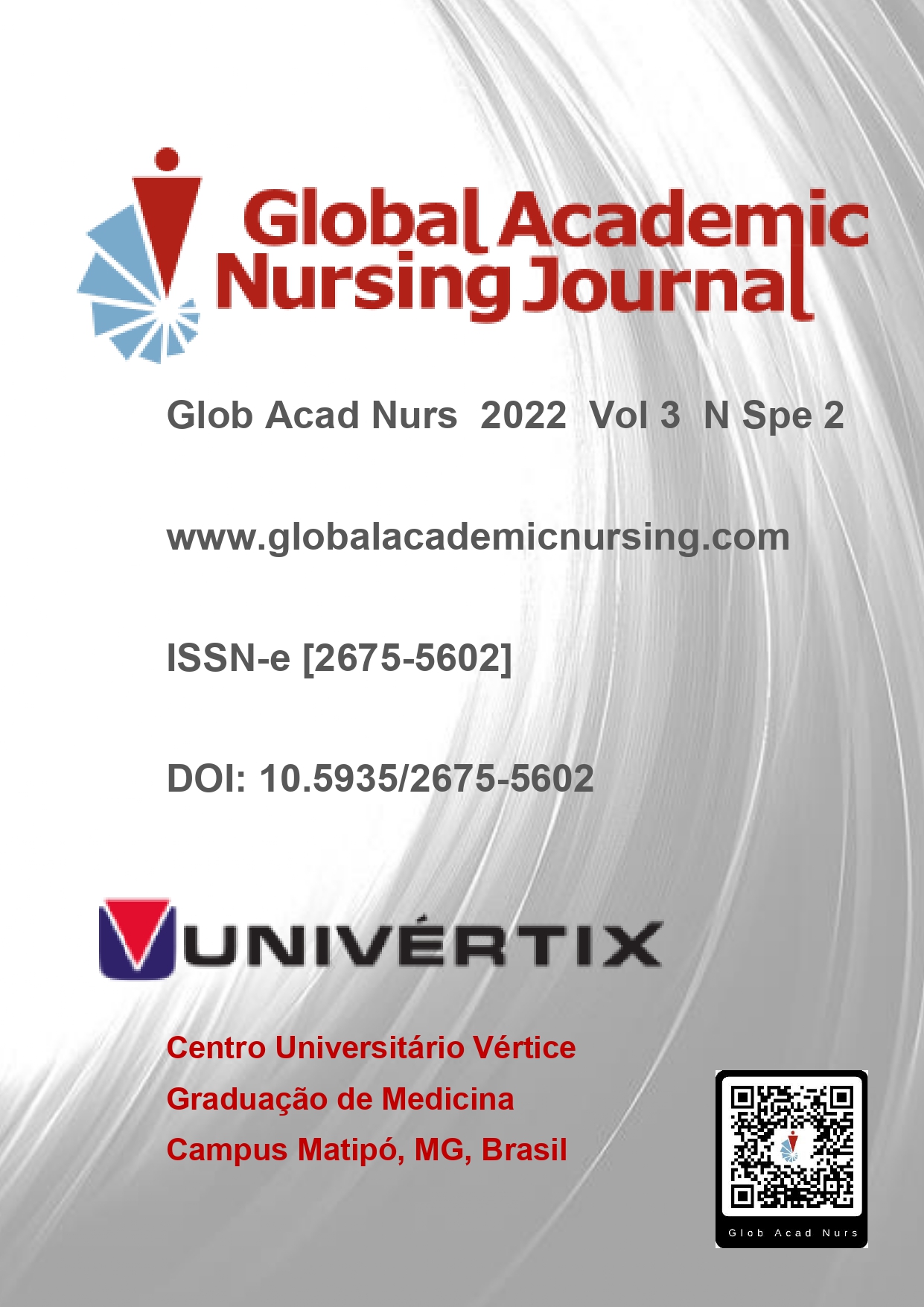Abstract
The aim was to identify the medical conduct against snakebites in the literature. This is a descriptive study of a critical-reflexive nature, with a qualitative approach. Three categories were established for analysis, such as: Ophidian accidents, Medical conducts and Permanent education. It was noted the importance of recognizing snakes and knowledge of clinical management in the establishment of an appropriate medical conduct and that, for this, it is necessary for the professional to have a continuing education in their work environment. It is concluded that their accidents constitute a public health problem, with the highest number of accidents in rural areas, in patients of economically active age; regarding the anatomical part, the lower limbs were the most affected; Regarding seasonality, the months from October to December were more frequent and most patients sought immediate help, up to 3 hours after the accident. Among the accidents, the most frequent local manifestations were pain and edema. Most cases were classified as mild and the number of deaths extremely low. The results showed a lack in the taxonomic description and the scarcity of scientific materials that addressed the medical conduct to be taken in the face of accidents with snakes.
References
FUNASA. Manual de diagnóstico e tratamento de acidentes por animais peçonhentos. 2. ed. Brasília: FUNASA; 2001.
Malaque CMS, Santoro ML, Cardoso JL, et al. Clinical picture and laboratorial evaluation in human loxoscelism. Toxicon. 2011;58:664-671. DOI: 10.101/j.toxicon.2011.09.011.
Gomes BL. Acidentes com peçonhentos no extremo Sul do Rio Grande do Sul, BRASIL. (Trabalho de Conclusão de Curso) Graduação em Ciências Biológicas, Universidade Federal de Pelotas, 2010.
Conselho Regional de Medicina Veterinária do Estado de Minas Gerais. Caderno Técnico de Veterinária e Zootecnia [Internet]. 75th ed. FEP MVZ Editora, editor. Vol. 29. Fundação de Ensino e Pesquisa em Medicina Veterinária e Zootecnia: Marcos Bryan Heinemann; 2014 [cited 2022 May 9]. Available from: https://issuu.com/escoladeveterinariaufmg/docs/caderno_tecnico_75_animais_peconhentos.pdf
Luciano PM, Silva GEB, Azevedo-Marques MM. Acidente botrópico fatal. Medicina (Ribeirão Preto). 2009 Mar 30;42(1):61–5. https://doi.org/10.11606/issn.2176-7262.v42i1p61-65
Coutinho JVSC, Valente BBT, Moura LGM. The Brazilian Journal of Infectious Diseases [Internet]. 2022 [acesso em 22 set 2022];26:102292. Disponível em: https://www.sciencedirect.com/science/article/pii/S1413867021007613?via%3Dihub
Feitosa SB, Mise YF, Mota ELA. Ofidismo no Tocantins: análise ecológica de determinantes e áreas de risco, 2007-2015. Epidemiologia e Serviços de Saúde. 2020 Sep;29(4). https://doi.org/10.5123/S1679-49742020000400016
Baldassin JCS, Francisco SR, Silva RW da, Moura RF, Pombo APMM. Perfil epidemiológico e dinâmica da distribuição dos acidentes ofídicos em humanos no Estado de São Paulo. Hygeia - Revista Brasileira de Geografia Médica e da Saúde. 2021;17:216–26. DOI: 10.14393/Hygeia17058406
Bredt CS, Litchteneker K. Avaliação Clínica e Epidemiológica dos acidentes com animais peçonhentos atendidos no Hospital Universitário do Oeste do Paraná 2008-2012. Revista do Médico Residente [Internet]. 2014 [acesso em 22 set 2022];16(1). Disponível em: http://www.crmpr.org.br/publicacoes/cientificas/index.php/revista-do-medico-residente/article/view/526
Aguiar TKPP, Vieira S, Garcês Filho AQ, Santos HHM dos. Treinamento no protocolo sobre acidentes ofídicos na região Amazônica na Fundação de Medicina Tropical Doutor Heitor Vieira Dourado: um relato de experiência. EmExt. [Internet]. 29º de outubro de 2021 [citado 20º de maio de 2022];151-63. Disponível em: https://seer.ufu.br/index.php/revextensao/article/view/62884
Ribeiro SP. A importância da epidemiologia e das manifestações clínicas na diferenciação entre acidente ofídico botrópico e laquético no norte do Tocantins: relato de caso. Revista Científica do ITPAC. 2018;11(1):19
Severino LB. Conhecimento da equipe de enfermagem no manejo ao paciente vítima de acidente botrópico na emergência de um hospital universitário. (Trabalho de Conclusão de Curso) Especialização – Residência Integrada Multiprofissional em Saúde, Universidade Federal de Santa Catarina, 2019.
Fraga A, Belluomini F, Peixoto AO. Conduta em acidentes com animais peçonhentos: departamento científico de emergências da SPSP. Sociedade de Pediatria de São Paulo [Internet]. 2020 [cited 2022 May 9]. Available from: https://www.spsp.org.br/PDF/SPSP-DC-Emerg%C3%AAncias-Animais%20Pe%C3%A7onhentos-09.11.2020.pdf
Boletim Epidemiológico [Internet]. [cited 2022 May 9]. Available from: http://www.ccvisat.ufba.br/wp-content/uploads/2020/11/boletim-ofidismo-1.pdf

This work is licensed under a Creative Commons Attribution-NonCommercial-NoDerivatives 4.0 International License.
Copyright (c) 2022 Global Academic Nursing Journal

